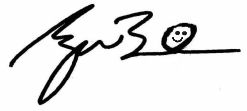But His Penmanship Is First Rate
 Tuesday, June 12, 2007 at 09:36AM
Tuesday, June 12, 2007 at 09:36AM  Quote: “The president cannot eliminate constitutional protections with the stroke of a pen by proclaiming a civilian, even a criminal civilian, an enemy combatant subject to indefinite military detention.” Federal Judge Diana Gribbon Motz
Quote: “The president cannot eliminate constitutional protections with the stroke of a pen by proclaiming a civilian, even a criminal civilian, an enemy combatant subject to indefinite military detention.” Federal Judge Diana Gribbon Motz Figure of Speech: metonymy (meh-TON-y-my), the scale-changing figure. From the Greek, meaning “name change.”
A three-judge panel ruled that the president does not have the authority to declare civilians “enemy combatants” and jail them without habeas corpus. Judge Motz uses a classic metonymy when she writes for the 2-1 majority. The president is literate enough to sign documents with more than one stroke, and that makes it a metonymy, a little thing that stands for a big thing, or the reverse.
The difference between a metonymy and its unpronounceable look-alike cousin, the synecdoche, causes a lot of confusion. There’s too much overlap between the two figures, and Figaro is tired of parsing it. He’s more interested in the practical use of rhetoric than in being right all the time. So from now on, anything that makes a part stand for a whole, or a species for a genus, or little things for big things, or vice versa, shall henceforth be a metonymy.
There. He corrupted a 2,500-year rhetorical tradition with the stroke of a, uh, keyboard.
Snappy Answer: “If the Constitution won’t keep us safe, let’s get rid of the Constitution.”
Technically, the metonymy is a kind of figure called a trope. For more on tropes, see page 212 of Figaro’s book.


Reader Comments (12)
Fig.
IE: metonymy is 'the pen is mightier than the sword' (more of a metaphor)
and
synecdoche is 'all hands on deck'
So isn't synecdoche scale-changing and metonymy substitution?
It makes sense, etymology-wise...
Fig.
fig.
Since I've never met a tool I didn't like, Butler be damned!
Fig.
Fig.